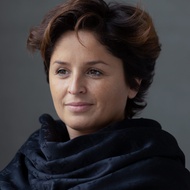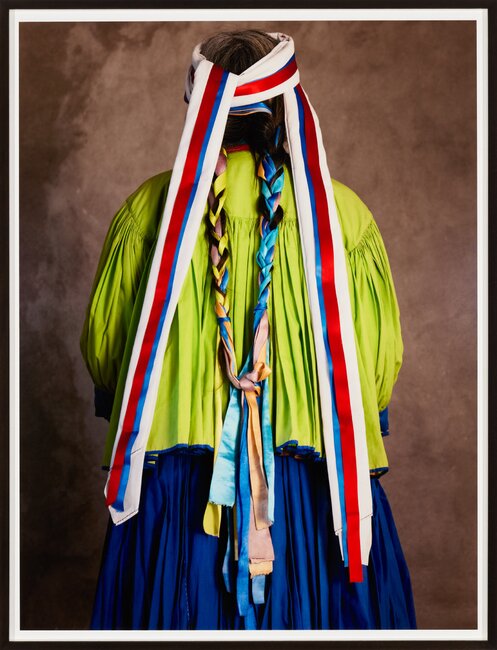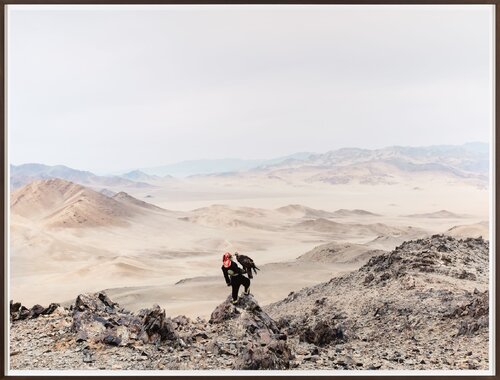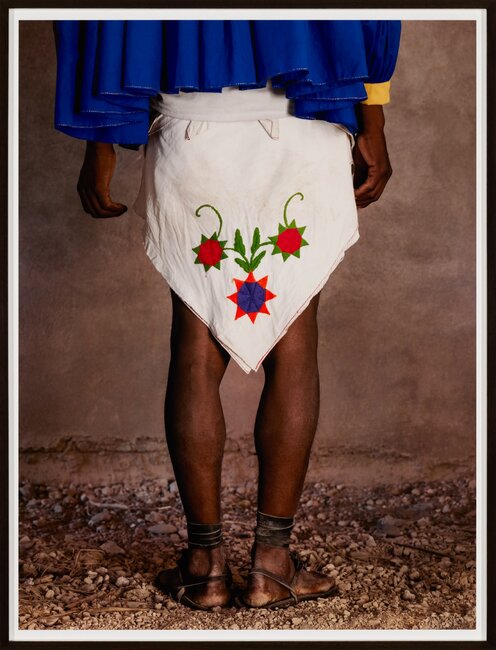
Hannelore Vandenbussche
Belgium (1981)The powerful humanity of sport and play
With her camera, Belgian photographer Hannelore Vandenbussche (°1981, lives and works in Amsterdam) has been travelling around the world since 2014. The common thread throughout her work are special sports traditions that give insight into the culture of a people and thus into our deep humanity. 'People all over the world engage in sports and games. Although motivations may differ, play is independent of factors such as poverty, wealth or religion. Through my projects, I want to give spectators an insight into other cultures, so that we can appreciate each other more and learn from each other,' states Hannelore Vandenbussche.
The idea for Human Playground came about when she worked as an assistant for British photographer Jimmy Nelson. 'While he mainly pictures the people and clothing of the world's last tribes, I saw the craziest things happening around me. That's how I came up with the idea of photographing sports among the tribes. Although everything has basically already been portrayed, during my research I did not find any photo book around that theme. That was the trigger to start my own project,' Vandenbussche says.
'When I read stories about the child slaves who have since been replaced by robot jockeys for camel races in the United Arab Emirates, or read how indigenous women in Bolivia managed to escape their oppression by turning en masse to free wrestling, I knew I wanted to visualise stories with a deeper, social meaning. Or how sport and play can promote emancipation.'
Emancipating role
Although each of her photographs stands on its own as an autonomous work of art, she compiled a series of images per sport into a lavish coffee table book for TeNeues and her research also formed the starting point for a documentary series at Netflix. 'The three projects are complementary. While for the series we work with themes like religion, money, pain or tradition and bring an overarching story across peoples, the picture book is divided by sport. Each time, I portray the playing field or landscape, the action and the people. That way I show the universal values we share, but also the fascinating diversity between all peoples of the world,' Vandenbussche says.
£
With her colourful images, the Belgian photographer sheds light on the lives of often remote peoples. 'One of my most extraordinary encounters was with the Tarahumara people in northern Mexico. Only on my third visit did they trust me enough for me to make my images. Because they live in an inhospitable area, they do almost everything on foot. Moreover, they believe their mile-long walks favour the rain gods. This makes them the best endurance runners in the world. Their self-organised running competition in traditional attire is a competitive, but at the same time particularly enjoyable celebration of togetherness,' Vandenbussche says. 'This human connection also struck me at Dambe, which is played on the rubbish dumps in the slums of Lagos. As soon as the game starts, people seem to forget the context, and regain hope. Another favourite are the eagle hunters in Mongolia. While those birds used to have to provide food for the tribes, flying has now become a technical competition. With her win, Aisholpan was the first woman to break the traditional male bastion. I also like to portray that emancipating role of the game.'


